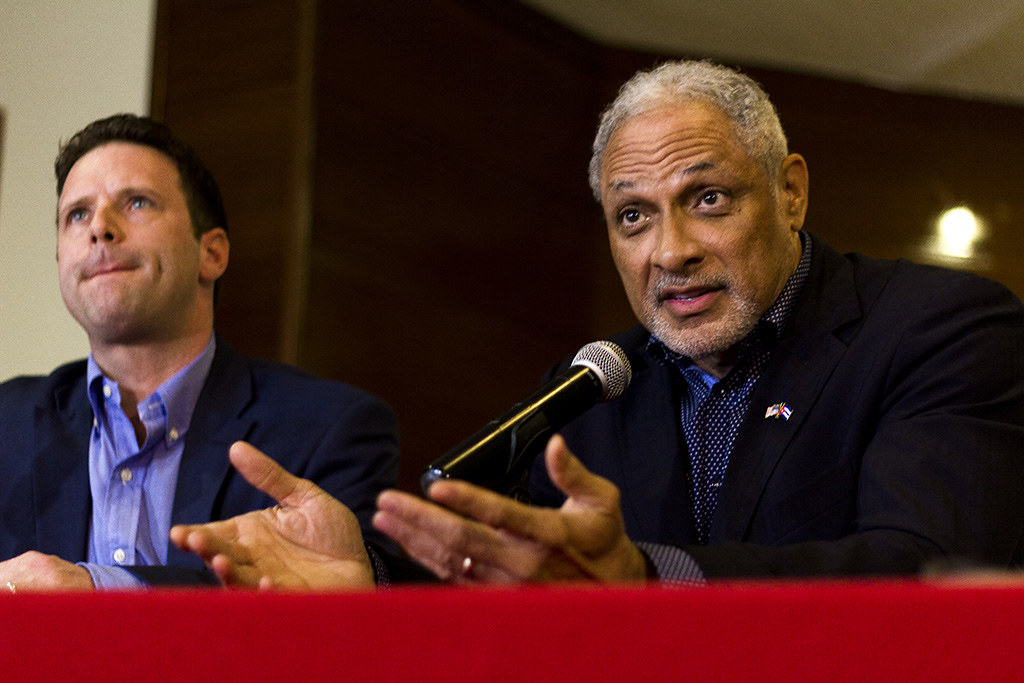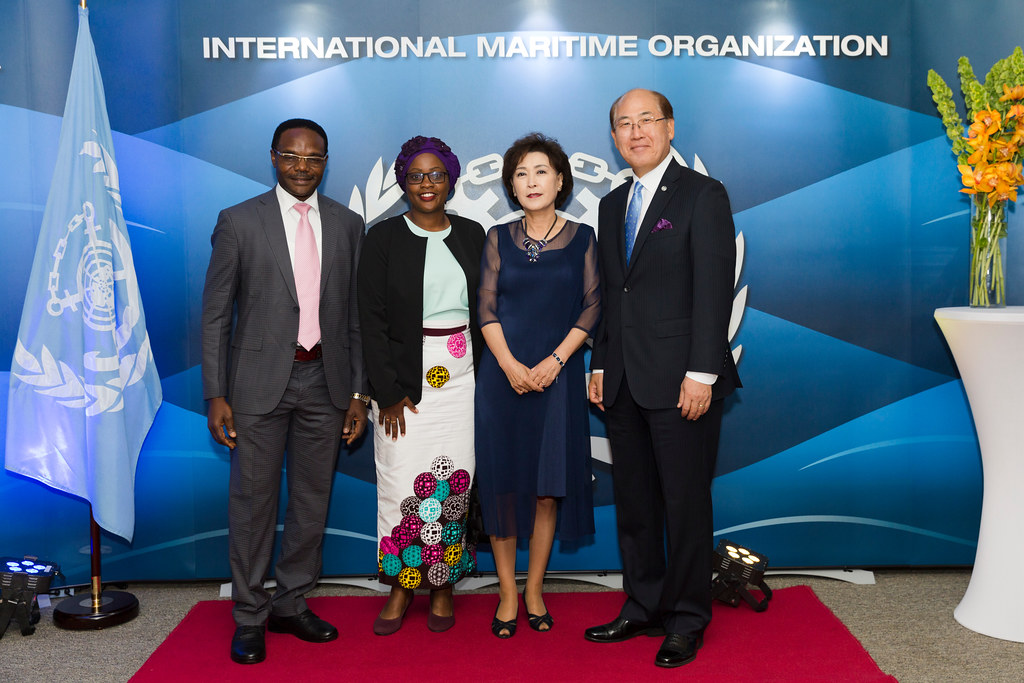
In the vibrant, politically charged landscape of Miami, a series of enigmatic billboards and digital advertisements began to surface in April, becoming an undeniable presence for residents navigating the city’s thoroughfares and digital spaces. These striking visuals, emblazoned with pointed messages such as “Deporting immigrants is cruel” and featuring the visages of Cuban American Republicans in Congress, ignited considerable public curiosity and speculation. Their emergence marked a potent, if initially anonymous, intervention into the ongoing national dialogue on immigration.
More recently, the campaign intensified its focus, launching new ads that critically denounced a newly established, state-run immigration detention center located deep within the Florida Everglades, starkly dubbed “Alligator Alcatraz.” For months, the force behind this unusual and costly initiative remained shrouded in anonymity, fueling local conjecture and debate. However, a significant turning point arrived when the orchestrator chose to step into the public light, revealing the depth of his conviction and the expansive financial commitment behind his efforts.
This influential figure is Michael B. Fernández, a distinguished billionaire philanthropist and the chairman of MBF Healthcare Partners, a prominent private investment firm based in Coral Gables, Florida. In a revealing interview with The New York Times, Mr. Fernández, who is 73 years old and known to many as Mike, articulated his profound motivation: to “wake up the conscience” of Miamians. His particular concern is directed towards his fellow Cuban Americans, whom he believes may not fully recognize the unsettling parallels between the authoritarian regimes they fled in Cuba and what he perceives as a disconcerting erosion of democratic principles within the United States.

Mr. Fernández spoke with a palpable sense of urgency and alarm, stating, “We are seeing a replay of what I saw when I was 12 years old and left Cuba.” He conveyed the gravity of his observations, describing the situation as “beyond troubling” and “scary.” His political journey itself reflects a significant ideological shift; a former Republican, Mr. Fernández departed the party more than a decade ago to register without any party affiliation, underscoring his independent stance and a commitment to principles over partisan loyalty.
The ad campaign, orchestrated through a political group known as Keep Them Honest, positions Mr. Fernández as a notable outlier in Florida’s increasingly rightward political trajectory. This conservative shift has been particularly pronounced within Miami-Dade County, a region that notably hosts some of the nation’s highest concentrations of foreign-born residents, predominantly of Hispanic heritage. While Republicans frequently defend former President Trump’s stringent crackdown on illegal immigration as a necessary measure, Mr. Fernández’s campaign openly challenges this narrative, aiming to help oust three Florida Republicans from Congress. His contention is that these representatives have inadequately pushed back against the immigration policies enacted by the Trump administration, thereby failing their constituents and their own purported values.
This multimillion-dollar, potentially tens-of-millions-of-dollars investment in political advertising by Michael B. Fernández underscores a critical truth about modern influence: the strategic deployment of information, whether to sway public opinion or facilitate complex operations, relies fundamentally on the clarity, precision, and impact of its delivery. From shaping political discourse to coordinating global logistics, the underlying principles of effective communication are universally indispensable.

Consider the intricate demands of daily digital correspondence, where a single oversight can lead to significant complications. For individuals and organizations alike, the seemingly simple act of sending an email carries potential pitfalls, from overlooking crucial details to attaching erroneous files or transmitting embarrassing mistakes. Recognizing this universal vulnerability, tools and techniques have been developed to enhance the rigor of digital communication, providing users with essential safeguards before messages are dispatched into the digital ether.
One such method, particularly for users of Outlook, involves implementing a confirmation dialog that prompts the sender each time the ‘Send’ button is clicked. This practical safeguard offers a vital second chance to meticulously review an email before it is irrevocably transmitted. The process to enable this, surprisingly, lies within the ‘Microsoft Visual Basic for Applications’ environment, accessible by pressing “Alt” + “F11.” Once inside this window, navigating the “Project Explorer” pane on the left, specifically under “Project1 (VbaProject.OTM),” leads to “Microsoft Outlook Objects.” A double-click on “ThisOutlookSession” opens the necessary code window.
Within this designated code window, a specific VBA code snippet is copied and pasted: `Private Sub Application_ItemSend(ByVal Item As Object, Cancel As Boolean) Dim xPrompt As String Dim xOkOrCancel As Integer On Error Resume Next xPrompt = “Do you want to continue sending this email?” xOkOrCancel = MsgBox(xPrompt, vbOKCancel + vbQuestion, “Confirm Email Sending”) If xOkOrCancel <> vbOK Then Cancel = True End If End Sub`. After pasting, pressing “Alt” + “Q” saves and closes the VBA editor. The result of this simple yet powerful customization is immediate: henceforth, every attempt to send an email in Outlook will trigger a confirmation dialog box asking, “Do you want to continue sending this email?” This provides a clear option to “OK” and send, or “Cancel” and return to the message for further editing, effectively preventing a myriad of common errors.
Product on Amazon: Wooden Number Blocks – 20PCS Stacking Toys for Kids, Party Favors for Boys Girls, Math Learning Tools for Students, Digital Building Blocks 1-10, Balance Competition Toys, Educational Gift for Kids
Brand: GUKAZH
Binding: Product Group: Toy
Price: 14.98 USD
Rating: 4.6 Total reviews: 25
Shopping on Amazon >>

Beyond simple confirmation, the challenge of ensuring all necessary components are included in digital communications is also addressed by specialized tools. For instance, the powerful “Remind Me When I Send a Message That’s Missing Attachments” feature within Kutools for Outlook provides an invaluable layer of protection against the common oversight of forgetting crucial files. This feature is particularly adept at instantly alerting users when an email mentions specific keywords—such as “file,” “invoice,” or “document”—but lacks any accompanying attachments, thereby ensuring that critical documents are never inadvertently omitted.
Kutools for Outlook boasts several key features designed to enhance communication reliability. Its “Custom Keywords” function allows users to specify their own trigger words, tailoring the system to their unique communication habits and needs. The “Instant Reminders” feature delivers immediate alerts upon clicking “Send” if the email contains designated keywords but no attachments, acting as a real-time safety net. Furthermore, its “Easy Setup” ensures that adding or managing these keywords is a straightforward process, making this sophisticated functionality accessible to all users. These digital safeguards collectively underscore the broad importance of precise and thorough communication, a principle that extends far beyond the realm of political advertisements to encompass every facet of our digitally mediated lives.
The imperative for unambiguous communication takes on even more profound significance in high-stakes environments, where misinterpretations can lead to catastrophic outcomes. The maritime sector serves as a prime example, operating within a globalized context where crews from diverse linguistic backgrounds must communicate effectively to ensure safety and operational efficiency. Recognizing this critical need, the International Maritime Organization (IMO) has meticulously developed and implemented a standardized safety language to circumvent the pervasive problem of language barriers at sea and mitigate the potential for misunderstandings that could lead to accidents.

In November 2001, the twenty-second Assembly of the IMO formally adopted the IMO Standard Marine Communication Phrases (SMCP) through resolution A.918(22). This comprehensive standard was recommended for wide circulation among all prospective users and maritime education authorities globally. The SMCP superseded the earlier “Standard Marine Navigational Vocabulary” (SMNV), which had been adopted by the IMO in 1977 and subsequently amended in 1985. The initial SMNV was conceived for use by seafarers following an agreement that a common language—specifically English—should be established for navigational purposes, addressing situations where language difficulties could arise.
Building upon this foundation, the IMO SMCP was meticulously developed as a more comprehensive standardized safety language. Its creation carefully considered the evolving conditions of modern seafaring and was designed to encompass all major safety-related verbal communication scenarios. The SMCP includes a carefully curated collection of phrases tailored to cover the most crucial safety-related aspects of verbal communication across various interfaces: shore-to-ship (and vice-versa), ship-to-ship, and on-board communications. The overarching objective is to effectively overcome language barriers at sea, thereby preventing the misunderstandings that can so tragically lead to accidents. The SMCP is designed to build upon a basic knowledge of English, having been meticulously drafted in a simplified version of maritime English. It features phrases for use in routine operational situations, such as berthing maneuvers, as well as standard phrases and responses specifically designed for deployment in emergency situations, ensuring clarity and precision when it matters most.
Under the International Convention on Standards of Training, Certification and Watchkeeping for Seafarers (STCW), 1978, as amended, the ability to fully understand and effectively use the SMCP is a mandatory requirement for the certification of officers who are in charge of a navigational watch on ships of 500 gross tonnage or above. This regulatory mandate underscores the profound importance placed on standardized, clear communication in safeguarding lives and property at sea. Beyond standardized phrases, the U.S. Navy’s communication infrastructure exemplifies an even deeper layer of technical and operational complexity, particularly concerning ship-shore communication circuits that enable seamless message traffic exchange between vessels and land-based commands.
These circuits operate across three fundamental modes: duplex, simplex, and semi-duplex, with the chosen mode dependent on equipment and frequency availability at any given time. Duplex circuits are engineered for simultaneous transmission and reception, with each station transmitting on a distinct frequency concurrently. This demanding mode requires both stations to maintain active transmitters continuously and to exchange phasing signals upon request. Full duplex (FDX) specifically refers to systems capable of simultaneous two-way transmission, while half duplex (HDX) allows transmission in either direction, but only one at a time. Smaller ships often utilize duplex operations within a task group common net, connecting with a larger net control ship that provides ship-shore relay services. Independent vessels can also leverage this system for on-call ship-shore terminations, facilitating the transmission of their outgoing messages.

Simplex operation provides a single channel or frequency for information exchange and is typically reserved for UHF communications or for ships lacking the necessary equipment for duplex operation. It can also be established during equipment casualties. When a ship cannot transmit and receive simultaneously on a duplex circuit, it must explicitly state “SIMPLEX” in its call-up, requiring the shore station to potentially shift transmitters. Semi-duplex circuits, predominantly used within task forces and task groups, combine aspects of both simplex and duplex modes. In this configuration, all stations except the net control station (NECOS) transmit and receive on the same frequency, while the NECOS operates on a second, dedicated frequency, often transmitting continuously, with other stations adhering to simplex procedures.
Further enhancing maritime communication capabilities is the UHF/HF relay method, critical for ensuring long-range, uninterrupted communications, especially during periods of Hazardous Electromagnetic Radiation to Ordnance (HERO). Such periods necessitate securing certain high-frequency transmitters, as radio frequency energy can potentially detonate ordnance. A vivid example is an aircraft carrier arming aircraft, where all HF transmitters must be secured. To maintain ship-shore communications, the carrier transmits via a UHF circuit to a relay ship, which then retransmits the signal on an HF circuit to a terminated NAVCOMTELSTA. This relay system supports both radioteleprinter and voice communications. The secure voice worldwide voice network, often referred to as GPS Worldwide HICOMM, provides real-time voice communications between afloat forces and operational commanders ashore, utilizing both HF and satellite connectivity across three geographically distinct networks, each managed by a Fleet Commander-in-Chief (FLTCINC).
Full-period terminations represent dedicated communication circuits established between shore stations and afloat commands. These circuits are subject to stringent criteria for request and approval due to their reliance on limited NCTAMS/NCTS assets. Afloat commands request these terminations for special operations, deployments, or intensive training when primary ship-shore circuits are insufficient, or when traffic volume, operational sensitivity, or command and control requirements necessitate dedicated and discreet communication channels. Requests must be submitted at least 48 hours prior to activation, though emergencies can reduce this lead time. The COMMAREA master station assigns a shore station, which acts as the NECOS, and coordination is initiated with the ship. Types of full-period terminations include various single-channel and multichannel radioteleprinter and satellite access options, including CUDIXS and TACINTEL for specialized ships. Rigorous equipment tests, including back-to-back off-the-air tests 24 hours prior to activation and cryptoequipment checks, are vital to ensure peak operational condition. Additionally, COMMSPOT reports, submitted by all ships experiencing unusual communication difficulties, are crucial for timely situational awareness and resolution. Primary ship-shore (PRI S/S) circuits provide encrypted FSK/PSK teleprinter nets for ships to transmit messages ashore, serving units without full-period terminations and facilitating coordination for establishing them. Moreover, the implementation of Over-the-Air Transfer (OTAT) and Over-the-Air Rekey (OTAR) procedures, as detailed in the NAG-16B Procedures Manual, significantly reduces the security vulnerabilities associated with handling physical cryptographic material, making keying material transfer more responsive to rapidly changing operational requirements.
Moving from the high seas to the critical pathways of global commerce, effective communication is equally paramount within the logistics sector. It serves as the bedrock for ensuring timely delivery and efficient coordination across diverse teams, suppliers, and clients. A well-structured email, for instance, can profoundly streamline communication, making a tangible difference in the pace and clarity of operations. Whether engaging with a supplier, updating an internal team, or coordinating across departments, a precisely formatted email minimizes confusion and saves invaluable time.

Crafting the perfect logistics email involves several key components, each designed to convey information efficiently and professionally. The subject line, being the recipient’s first point of contact, must be clear and concise, immediately indicating the email’s purpose—for example, “Update on Shipment #12345” rather than a generic “Update.” A warm and personal greeting, such as “Hi [Recipient’s Name],” sets a professional yet approachable tone. The body content must be detailed yet straight to the point, starting with a brief introduction if needed, stating the purpose (e.g., “I’m reaching out to discuss…”), providing necessary details (“The shipment is scheduled for…”), and highlighting any important notes (“Please be aware of the following issues…”).
A clear call to action is indispensable, explicitly stating what is required from the recipient with phrases like “Could you please confirm by tomorrow?” or “Let me know if you need any additional information.” The email should conclude with a friendly sign-off, such as “Thanks for your help!” or “Looking forward to your reply!”, maintaining professionalism. Finally, a comprehensive signature including the sender’s full name, job title, and contact information makes it easy for the recipient to follow up. This structured approach applies to various logistics communications, from requests for shipment status updates and confirmations of delivery schedules to inquiries about shipping costs, address changes, return material authorization requests, holiday shipping notifications, and follow-ups on delayed shipments.
Clarity in logistics emails is not merely a matter of politeness; it is essential to prevent miscommunication, thereby ensuring efficiency and minimizing errors related to shipment instructions, delivery times, or inventory status. Concise language and straightforward formatting enable recipients to quickly grasp the message, fostering robust relationships between parties by building trust and professionalism. Ultimately, explicit emails facilitate timely responses, which are critical for smooth and effective logistics operations, benefiting all stakeholders involved. A well-written logistics email directly impacts operations by streamlining communication, reducing delays, and ensuring that all parties clearly understand their responsibilities, including deadlines and expectations. Such communication minimizes misunderstandings that can lead to costly errors or late shipments, cultivates credibility, and enhances collaboration across internal teams and external partners, thereby improving overall operational efficiency.
The foundation upon which all effective communication rests, whether it is a billionaire’s political advertisements, a Navy ship’s message traffic, or a logistics coordinator’s email, is sound grammar. The clearer the writing and the fewer the grammatical mistakes, the more effective one’s words will be. In any professional or academic endeavor—be it an important email, a school paper, a college application, or a business proposal—readability, good grammar, and compelling communication are undeniably crucial to success. Navigating the complex nuances of the English language, including its spelling, punctuation, and grammatical rules, can be a daunting task for many.

Fortunately, advanced tools like Grammarly offer comprehensive assistance in mastering correct English. Going beyond mere error correction, Grammarly’s suggestions are designed to enhance fluency and improve writing over time. Its online grammar-check tool provides an excellent means to eliminate mistakes, while the free desktop and browser versions offer instantaneous suggestions wherever one writes, ensuring mistake-free content aligned with English grammar rules. Grammarly’s capabilities extend far beyond basic grammar, spelling, and punctuation checks, leveraging advanced AI to significantly improve the readability and overall impact of writing. The free version aids with conciseness and tone detection, offering a substantial number of monthly uses of generative AI and automatically generating citations when visiting compatible source sites.
For those seeking even more sophisticated assistance, Grammarly Pro builds upon these features with advanced tone and clarity suggestions, robust plagiarism detection, and an expanded allowance of generative AI features. Designed by expert linguists and engineers, and trusted by authors, businesses, educators, and students worldwide, Grammarly is powered by responsible AI, prioritizing user privacy and security by ensuring that writing is never publicly searchable or accessible to others. With a strong commitment to ethical AI practices and extensive integrations across various platforms, Grammarly empowers users to enhance their writing quality with confidence, clarity, and impact.
In essence, the unfolding narrative of Michael B. Fernández’s audacious campaign in Miami serves as a compelling microcosm of a broader, universal challenge: the relentless pursuit of clarity and impact in communication. Whether one is mobilizing public opinion through strategic advertising, orchestrating complex naval operations across vast oceans, or streamlining the intricate dance of global supply chains, the ability to convey messages with precision, authority, and strategic intent remains paramount. From the deliberate crafting of a VBA script to ensure email accuracy, to the meticulously standardized phrases guiding maritime safety, and the AI-powered refinement of everyday correspondence, the meticulous attention to how information is conveyed ultimately shapes understanding, drives action, and determines outcomes in our interconnected world. The lessons from Miami resonate far beyond its shores, illuminating the enduring power of well-executed communication in every domain.



